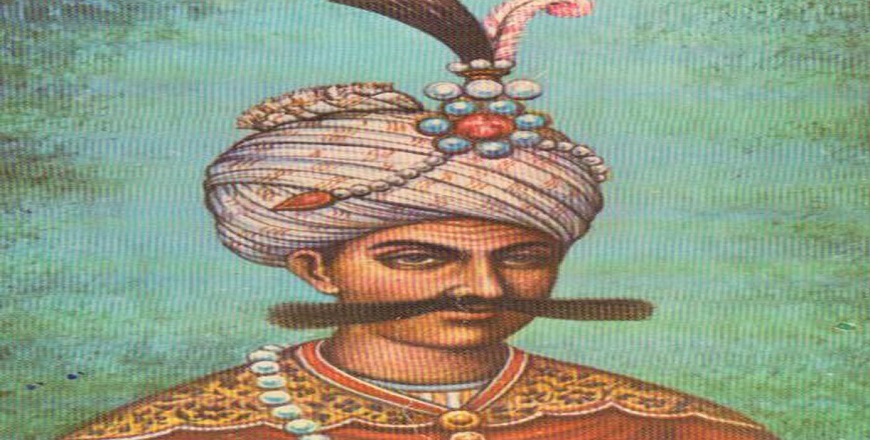

Persian Empire Again (Safavid Dynasty)
The ancient Persian Empire was restored by the Safavids as a Shia Muslim state. Persian society and culture had never died. It had survived the Arab conquest without losing its cultural identity, and Persian influence in culture and administration had been considerable even under Arab rule. Many Iranian languages had survived the conquest: New Persian had become the language of the court, government and literature with the rise of independent states in Iranian lands. And it had so remained even under Turkish and Mongol rulers, in fact becoming the lingua franca for a vast region in western and Central Asia.
Yet it was the Safavids who restored the old Persian empire by returning virtually the entire Iranian lands as the “protected kingdom of Iran” under one standard, which bore the insignia of the lion holding a sword in its hand and carrying the sun on its back – a Muslim empire, but one which exclusively followed the Twelve Shia faith, once again giving Iran a distinct religious identity. However, contrary to some views, the Safavid empire was not built on a wave of modern Persian nationalist sentiment sweeping across the old Sasanian lands with the conscious intention of reuniting and reconstructing ancient Persia.
The Safavids (1501 – 1722) ruled Persia for more than two centuries, longer than any other dynasty since the Arab conquest, or indeed afterwards until today. But, as in the ancient past, even this apparent continuity was marked by short-term breaks, major crises and the probability on several occasions of the fall of the dynasty, perhaps the breakdown of the empire. This in the end is what happened as a result of the fall of Isfahan and the abdication of Soltan Hosein at the hands of the Ghalzeh Afghan tribe in 1722.
A moment’s reflection on the pattern of events during the long period of Safavid rule, perhaps more than many other periods of Iranian history, reveals the extent to which the personality of the ruler determined the course of history, and stability or disorder in state and society, precisely because in a system of arbitrary rule it was one person alone who, in the ultimate analysis, was the arbiter of life and death, ownership and dispossession, success and failure.
It cannot be assumed with any degree of certainty that if Ismail had been killed at or before the battle of Tabriz in 1501 Iran would once again have been reunited as one political entity. And it is highly unlikely that, had Abbas been murdered young in the 1580s – as he was about to be shortly before he made his bid for the throne – the Safavid dynasty would have survived or indeed that Iran would have been saved from being dismembered. Domestic causes alone might well have caused the Safavid state and empire to have broken down on a number of occasions.
The Emergence of the New State
The coronation in Tabriz was only the beginning of the establishment of the new state. When in 1503 Ismail defeated Morad Aq Qoyunlu in Hamadan he was at last free from any danger posed by his Turkman relatives, and by 1507 extended his rule to Diyarbekr. He captured Baghdad in 1508 and next overthrew the Mushashaiya in Khuzestan, a line of heretical Shias who had ruled the region for many decades. Ismail had by then inherited the Aq Qoyunlu empire and almost appeared as another ruler of Turkman empire like his maternal grandfather Uzun Hasan, but one who was ruthlessly imposing Shism on many of its subjects. He did not yet have any possession in eastern Persia.
Meanwhile the Timurids had lost their possessions in Khorasan to the expanding Uzbek empire, and the Uzbek ruler Mohammad Sheibani Khan had begun to raid Kerman. Having received a rude reply from the Uzbek leader to his letter of protest against his offensive behavior, Ismail decided to act. He led his army to Khorasan and met Sheibani Khan’s forces at Marv, winning the day after a pitched battle which claimed heavy casualties. Sheiban Khan was killed in the battle and Ismail sent his head to his Sunni coreligionist, the Ottoman Sultan Bayazid, as a gruesome gift, an insult to which he received the full reply four years later at Chaldiran. Ismail’s later adventure Transoxiana in supporting Babur, the future founder of the Mogul empire in India, to hold Samarkand did not pay off and the eastern borders of his empire were set at Oxus, although Balkh was later to be lost to the Uzbeks.
With the capture of Khorasan Ismail became the ruler of an empire which stretched Diarbeker to the Oxus. Some of his western and eastern possessions were lost in later years but in its extent his empire resembled that of the Sasanians before the Islamic conquest. Ismail’s dubious claim of direct descent from the Shii Imams and through them the prophet of Islam was believed by friend and foe alike for centuries to come. He was the Perfect Spiritual Guide (Morshed-e-Kamel) of the Safavid Sufi order, which had its roots firmly if embarrassingly in Sunni Islam. Yet outwardly to his subjects he was a fanatical Shia, who since the capture of Tabriz in 1501 had declared Shiism to be the official state religion and imposed it on his subjects on pain of death.
Shortly afterwards the Ottomans occupied Tabriz, the Safavid capital. Selim planned to winter in the area and resume his campaign in the spring. His troops, however, wearied of the long winter with limited provisions, and so he had to withdraw. Ismail re-entered Tabriz when Selim had left, but having occupied eastern Anatolia, the Ottomans had now been settled dangerously close to the Safavid capital. This was later moved east to Qazvin, and later still to Isfahan, but not in Ismail’s lifetime...Read more